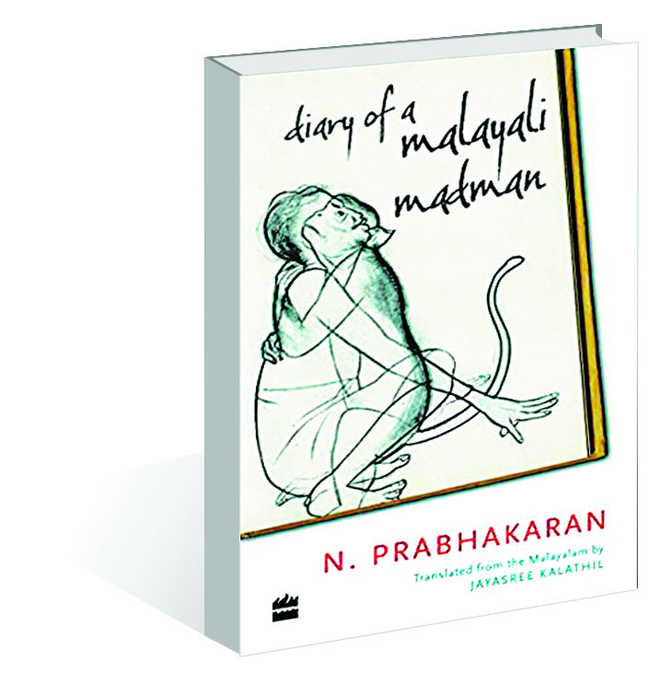
Diary of a Malayali Madman by N. Prabhakaran. Harper Perennial. Pages 254. Rs 399
Harpreet Vohra
Diary of a Malayali Madman shakes one out of quixotic slumber as madness is a pulsating, reverberating trope. The madman is the fulcrum and the stories spin. Prabhakaran’s stories translated from Malayalam by Jayasree Kalathil use madness to expose concealed lives entrenched in political, social and personal throes.
Prabhakaran, a celebrated Malayali writer, weaves five stories around the mundane lives of characters that have “become mad to remain sane.” All stories, set in Kerala. capture the local scenario of ruthless politics, alcoholism, sexual debauchery, suicide villages and the lonely, confused madman, full of love and yearning. While Elie Wiesel talked of madness being “prophetic” and Michel Foucault of it being “liberating,” what does Prabhakaran’s madness symbolise?
Prabhakaran uses fantasy and realism to tell his stories: each one a universe of its own. Wild Goat captures Georgekutty’s encounters with the absurd which leads him to call himself a “long road to nowhere” and finally runs to the forest to be shot like a wild goat. The evocative language and the tautness of plot are inescapable.
The title story, Diary of a Malayali Madman, is about Aagi who prefers to talk to animals as they listen and respond. He is like Albert Camus’s hero of The Outsider who doesn’t “play the game” and Aagi remarks that “good people do not succeed.” In the end, he is left with a monkey Lachanan who he “holds close to [his] chest.” Pigman, which won Prabhakaran the Katha Award for Best Story in1994, is a moving piece of men working on a pig farm and one man’s deep love for the pigs, Thimma who dies of the same disease the pigs die of. Tender Coconut and Invisible Forests have the same kind of characters: one of Mohanan living in a make-believe world of “seven female priestesses” and the other of Krishna who constantly talks to herself and is silent only with the “other members of her family.”
All characters symbolise “speaking back” to the systems which encumber them. As the writer says in an interview, “madness is a way of coping…to overcome this situation through imagined worlds that might seem strange to others.”
Prabhakaran’s title is based on a story by Nikolai Gogol, Diary of a Madman in which the hero does not think of himself as mad. Prabhakaran’s characters, too, are aware of their sanity in an utterly chaotic world.
Kerala is captured in all its idyllic beauty but the underbelly of dogged politics and utterly failed family relationships rip the tranquility apart. Jayasree Kalathil has effectively negotiated between Malaylam and English. She uses patois ever so sparingly and never does the work appear staccato.
Almost all stories are accompanied by a beautiful sketch of an animal suggesting that the only discernible meaning in a world of human beings can be derived from animals — they have no real or feigned madness.



























